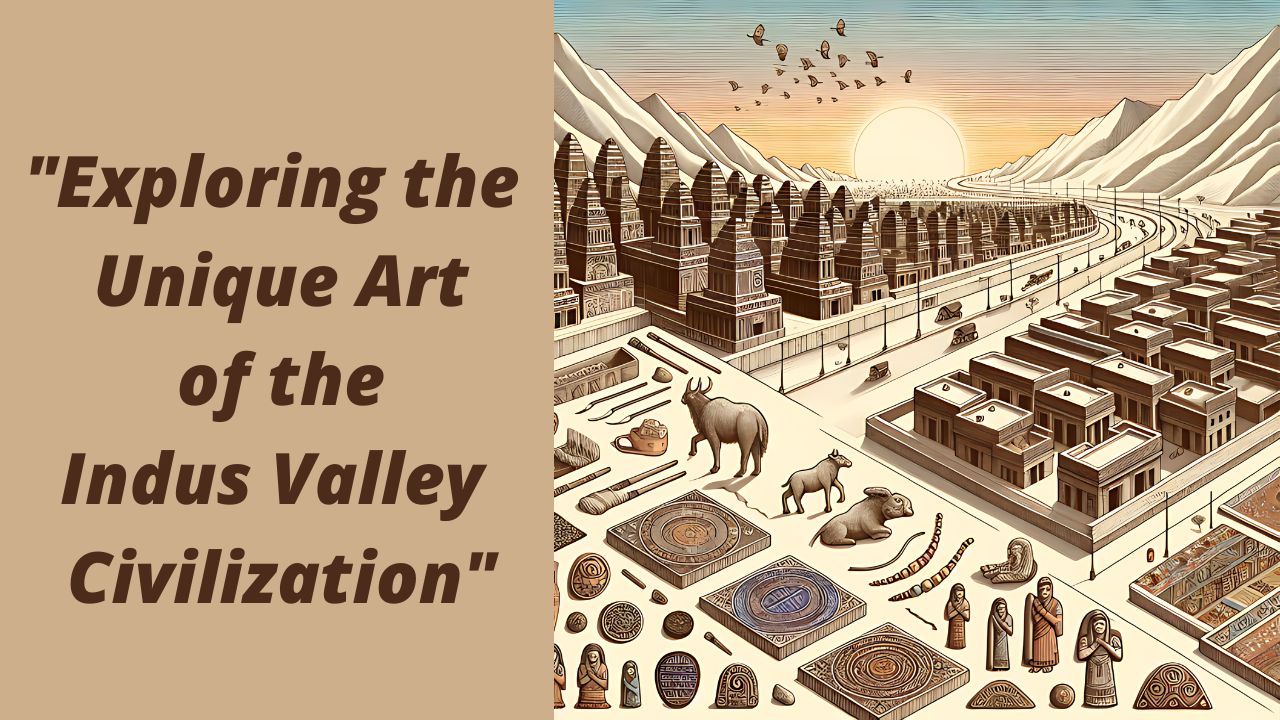"Exploring the Unique Art of the Indus Valley Civilization"

Table of Contents:
Introduction
The art of the Indus Valley Civilization encapsulates an extraordinary narrative of creativity and craftsmanship that flourished over 5,000 years ago. Today, we delve into this unique art form, exploring its distinctive characteristics and the lingering mysteries it holds.
Historical Context of the Indus Valley Civilization
The Indus Valley Civilization, one of the world's oldest urban cultures, thrived between 3300–1300 BCE in what is now Pakistan and northwest India. Renowned for its advanced urban planning, architecture, and social systems, this civilization also produced a wealth of artistic artifacts that offer insights into their daily life and spiritual beliefs.
Major Sites and Discoveries
-
Harappa and Mohenjo-Daro: These sites are famous for their well-planned cities and sophisticated public buildings.
-
Dholavira and Lothal: Known for their management of water resources and maritime trade.
These archaeological sites have yielded numerous artifacts, shedding light on the complexity of Indus society and its aesthetic sensibilities.
Characteristic Art Forms of the Indus Valley
Indus art, though not prolific in monumental statues, primarily consists of small, finely crafted objects. Here are some typical art forms:
-
Terracotta Figurines: Often representing animals and human figures, showcasing clothing patterns and hairstyles.
-
Beadwork: Indus artisans crafted intricate beadwork using materials like carnelian, lapis lazuli, and gold.
-
Seals: Made from steatite, these seals were used in trade and bore animal motifs and possibly ideograms.
-
Pottery: Featuring geometric and floral patterns, Indus pottery is known for its precision and decorative style.
Materials and Methods in Indus Valley Art
Indus artists utilized materials locally sourced from their rich natural environment:
-
Stones and Minerals: Used for beads, seals, and jewelry.
-
Terracotta: Widely used for sculpture and pottery.
-
Metals: Copper and bronze were used for tools, weapons, and decorative items.
Traditional techniques included:
-
Advanced Kiln Technology: Enabled high-quality ceramic production.
-
Stone Drilling: Precision drilling techniques were used for bead-making.
Symbolism in Indus Valley Artifacts
The motifs and designs seen on Indus artifacts are not merely decorative but are believed to hold deeper spiritual or communal meanings. Common symbols include:
-
Animals: Such as the unicorn-like figure, elephants, and tigers, which might have mythological significance.
-
Geometric Patterns: Perhaps illustrating concepts of order and continuity.
-
Anthropomorphic Figures: Suggesting religious or cultural narratives.
Comparative Analysis: Indus Art vs. Contemporary Civilizations
When comparing Indus Valley art with contemporary civilizations like Mesopotamia and Ancient Egypt, several differences arise:
-
Symbolism: Indus iconography is less grandiose but equally sophisticated.
-
Art Forms: Indus artifacts are smaller and more utilitarian.
-
Technological Innovation: The Indus Valley exhibit advanced techniques in bead making and metallurgy.
Legacy and Impact on Modern Art
The understated elegance and complexity of Indus Valley art continue to influence modern artisans and scholars. Contemporary artists draw inspiration from the civilization’s approach to form, symmetry, and detailing in craft.
Challenges in Preserving Indus Valley Art
Preservation of these artifacts is hampered by environmental factors and insufficient funding. Efforts need to be improved to protect these treasures for future studies.
Conclusion
The art of the Indus Valley Civilization offers us a window into the rich cultural tapestry of one of the earliest societies. Its unique blend of aesthetic appeal and functional pragmatism continues to captivate and inspire. As we further explore and understand these artifacts, we not only preserve this ancient art form but also ensure that the Indus Valley's artistic legacy endures.